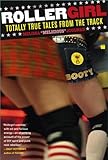As the Mahatma Gandhi once said:
“First, they ignore you.
Then they laugh at you.
Then they fight you.
Then you win.”
The paleo movement grew slowly for many years in the obscurity of Stage 1, and spent perhaps a year in Stage 2 being mocked as the “caveman diet”. Now, after several years of exponential growth and a stubborn refusal to be co-opted, we have finally achieved Stage 3, “Then they fight you.”
The latest example, of course, is the dismissive baloney pushed by the “experts” hired by US News and World Report, which ranks paleo dead last among 20 different diets—behind such food-free nutritional gimmicks as Slim-Fast and the Volumetrics Diet.
I have my differences with Loren Cordain, but his rebuttal is both comprehensive and devastating. Respect.
Also, the reader votes for “Did this diet work for you?” show that paleo is by far the most successful of the diets, with several thousand “Yes” votes and under 100 “No” votes. The only other diets to win more “Yes” than “No” votes were Weight Watchers and Atkins!
Update: The above is no longer true, as the Birdseed Brigade has apparently decided not only to upvote vegan and vegetarian diets en masse…they’ve decided to downvote all the meat-based diets, including Paleo, Atkins, South Beach, and Zone! (Thus illustrating the difference between our communities: we don’t attempt to silence or censor those who disagree with us.)
Previous to that, we’ve seen the repeated hatchet jobs on grass-fed beef by John Stossel (one in print and one on video), both of which use as their sole source non-peer-reviewed “research” from a scientist sponsored entirely by Elanco—a subsidiary of Eli Lilly that manufactures antibiotics and hormonal growth promoters for feedlot cattle, pigs, and chickens! President Obama’s personal trainer, in a breathtakingly stupid article, has called paleo “the newest nutritional fad”. (Solid rebuttal here.) And the avalanche of anti-paleo articles by “qualified experts” has just begun.
We might expect this sort of offensive from the American Dietetic Association and the American Diabetic Association, because anyone eating any variation on the paleo diet is essentially telling them “All of you have been completely wrong for decades, and your bad advice is killing millions of people each year.” And we might expect this sort of offensive from the PCRM, because they’re just a front for vegans and animal rights activists.
But why such hostility from the mainstream press? The paleo movement doesn’t have the anti-establishment politics of, say, the vegan movement—or, as far as I can tell, any clear politics at all. If anything, it tends towards a casual sort of conservative libertarianism, but that’s probably just because so many paleo bloggers are semi-retired techies. It seems unlikely that “going paleo” is the cause of anyone’s political beliefs.
The answer, of course, lies in the age-old admonition:
“Follow the money.”
Adding Value: The Foundation Of Functional Economies
An economy based entirely on selling the same things back and forth to each other for ever-increasing amounts of money is doomed to eventual collapse. As we found out just a couple years ago, flipping houses isn’t the same as having a manufacturing base and a world that wants to buy what we make.
Stated more generally, an economy is only sustainable to the degree that its participants add value by their actions. Factory workers add value by turning raw materials into clothes and cars and electronics; farmers turn seeds and soil and sunlight into crops; ranchers turn calves and grass into beef; engineers turn ideas into buildable products; truckers move things from where they are to where they’re wanted; cashiers and stockers and managers and janitors turn a locked building full of things into a system by which you can find what you want and exchange money for it; and so on. Added value – cost of design – cost of production = profit.
This is not to be confused with the labor theory of value, which claims that labor has intrinsic value, and indeed, is the only ‘fair’ measure of value. This is hogwash. It’s easy to spend years of effort and not add a single penny of value—because value is determined by the buyer, not the seller. It doesn’t matter how much time I’ve spent making a coat rack if it’s ugly and no one wants to buy it!
Moving ahead: the more value we can add, the more profit we can make. It should be obvious that one way to add value is to transform cheap raw materials into an expensive finished product.
Adding Value: Why Grains (And Soy) Are Profitable
There’s one big reason that industrial food manufacturers like Kraft (Nabisco, Snackwells, General Foods, many more), Con-Agra (Chef Boy-Ar-Dee, Healthy Choice, many more), Pepsico (Frito-Lay, Quaker), Kellogg’s (Kashi, Morningstar Farms, Nutrigrain, more) are huge and profitable.
It’s because grains are cheap, but the “foods” made from them aren’t.
One reason grains are so cheap in the USA, of course, is gigantic subsidies for commodity agriculture that, while advertised as helping farmers, go mostly to agribusinesses like Archer Daniels Midland ($62 billion in sales), Cargill ($108 billion), ConAgra ($12 billion), and Monsanto ($11 billion)—and result in a corn surplus so large that we are forced to turn corn into ethanol and feed it to our cars, at a net energy loss!
“There isn’t one grain of anything in the world that is sold in a free market. Not one! The only place you see a free market is in the speeches of politicians. People who are not in the Midwest do not understand that this is a socialist country.”
-Dwayne Andreas, then-CEO of Archer Daniels Midland“At least 43 percent of ADM’s annual profits are from products heavily subsidized or protected by the American government. Moreover, every $1 of profits earned by ADM’s corn sweetener operation costs consumers $10.” (Source.)
(And if you’re not clear on just how deeply in control of our government these corporations are, here’s another example: Leaked cables reveal that US diplomats take orders directly from Monsanto.)
That cheapness, however, doesn’t translate to profits for farmers or cheap food at the supermarket. Let’s do some math!
(Note: these are regular prices from the CBOT and my local supermarket, as of today. Supermarket prices will be somewhat cheaper on sale or at Costco.)
A bushel of corn weighs 56 pounds and costs $6.85. That’s 12.2 cents per pound.
A bag of Tostitos contains about 10 cents worth of corn, and costs $4.00.
That’s a 4000% increase.
A bushel of wheat weighs 60 pounds and costs $7.62. That’s 12.7 cents per pound.
A loaf of Wonder Bread contains about 16 cents worth of wheat, and sells for $4.40.
That’s a 2700% increase.
A bushel of soybeans weighs 60 pounds and costs $13.64. That’s 22.7 cents per pound.
A box of “Silk” soy milk contains about 4.5 cents worth of soybeans, and sells for $2.90.
That’s a 6400% increase.
In other words, it’s highly profitable to turn the products of industrial agriculture—cereal grains and soybeans—into highly processed “food”.
Note that the profit for the processors and middlemen comes out of the pockets of the producer and the consumer. Farmers are squeezed by the 12 cents per pound, and consumers are squeezed by the $4.40 per loaf.
In contrast, pork bellies cost $1.20 per pound today.
A pound of bacon costs about $5.
That’s a 400% increase…
…which looks like a lot until you compare it with 2700%-6400% for grains. Also, unlike grain products, bacon must be stored, shipped, and sold under continuous refrigeration—and it has a much shorter shelf life.
It’s clear that it’s far more profitable to sell us processed grain products than meat, eggs, and vegetables…which leaves a lot of money available to spend on persuading us to buy them. Are you starting to understand why grains are encased in colorful packaging, pushed on us as “heart-healthy” by the government, and advertised continually in all forms of media?
And when we purchase grass-fed beef directly from the rancher, eggs from the farmer, and produce from the grower, we are bypassing the entire monumentally profitable system of industrial agriculture—the railroads, grain elevators, antibiotics, growth hormones, plows, combines, chemical fertilizers (the Haber process, by which ammonium nitrate fertilizer is made, uses 3-5% of world natural gas production!), processors, inspectors, fortifiers, manufacturers, distributors, and advertisers that profit so handsomely by turning cheap grains into expensive food-like substances.
Conclusion: You Are A Radical (And So Am I)
Simply by eating a paleo diet, we have made ourselves enemies of the establishment, and will be treated henceforth as dangerous radicals.
This is not a conspiracy theory. By eschewing commodity crops and advocating the consumption of grass-fed meat, pastured eggs, and local produce, we are making several very, very powerful enemies.
- The medical and nutritional establishments hate paleo, because we’re exposing the fact that they’ve been wrong for decades and have killed millions of people with their bad advice.
- The agribusinesses and industrial food processors hate paleo, because we’re hurting their business by not buying their highly profitable grain- and soy-based products.
- The mainstream media hates paleo, because they profit handsomely from advertising those grain- and soy-based products.
- The government hates paleo, because they’re the enforcement arm of big agribusinesses, industrial food processors, and mainstream media—and because their subsidy programs create mountains of surplus grain that must be consumed somehow.
Is anyone surprised that a government which spends billions of dollars subsidizing the production of corn, soy, and wheat, would issue nutritional recommendations emphasizing the consumption of corn, soy, and wheat?
And this is why, despite all their rhetoric, the vegans end up on the same team as Monsanto and Pepsico: their interests are aligned.
In summary:
- Expect more hatchet jobs against “paleo” in the media.
- Expect more statistical manipulation marketed as “science”.
- Expect outright scientific fraud in support of “hearthealthywholegrains” and in opposition to meat and eggs—particularly grass-fed, pastured, and local meats.
- Expect more breathless news articles that purposely misinterpret archaeological evidence of a few specks of root starches to imply that Paleolithic humans ate a diet based on cereal grains.
- Expect subtle attempts to subvert “paleo” by packaging ancestral varieties of grain (e.g. kamut, spelt, amaranth) and obscure fruit extracts (mostly made of apple and grape juice), and selling them back to us in colorful packaging.
- Expect even more regulations and restrictions that destroy local, sustainable farming by forcing their nutritionally superior products into the commodity system, instead of allowing us as individuals to buy them directly—which, in the case of meat, we already can’t. (The regulations have got even worse since Joel Salatin wrote this woefully true article, “Everything I Want To Do Is Illegal.”)
- Expect bogus scare stories in the media about the dangers of local meat, eggs, cheese, and produce from small farmers. Expect bogus salmonella scares and fraudulent inspections that claim meaningless or nonexistent bacterial contamination.
- Expect school lunches to become even more disgusting and empty of nutrition. If you want your child to grow up healthy, expect to help them pack a lunch every day. Expect to be grilled by suspicious administrators who think you’re damaging your child by feeding them real food.
- Expect friends and co-workers to see and believe this propaganda. Expect that you will have to defend your dietary choices against a steadily increasing chorus of suspicion and hostility.
None of this should discourage any of us from continuing to do what’s right for ourselves, our families, our children, and the Earth. We are healthy, we are happy, we are strong, and we will win because everyone else wants to be as healthy as we are.
Be proud of your health and how you’ve attained it. Do not be pushy, but do not apologize for how you eat and live. And, most importantly, be prepared for the storm.
Live in freedom, live in beauty.
JS

















